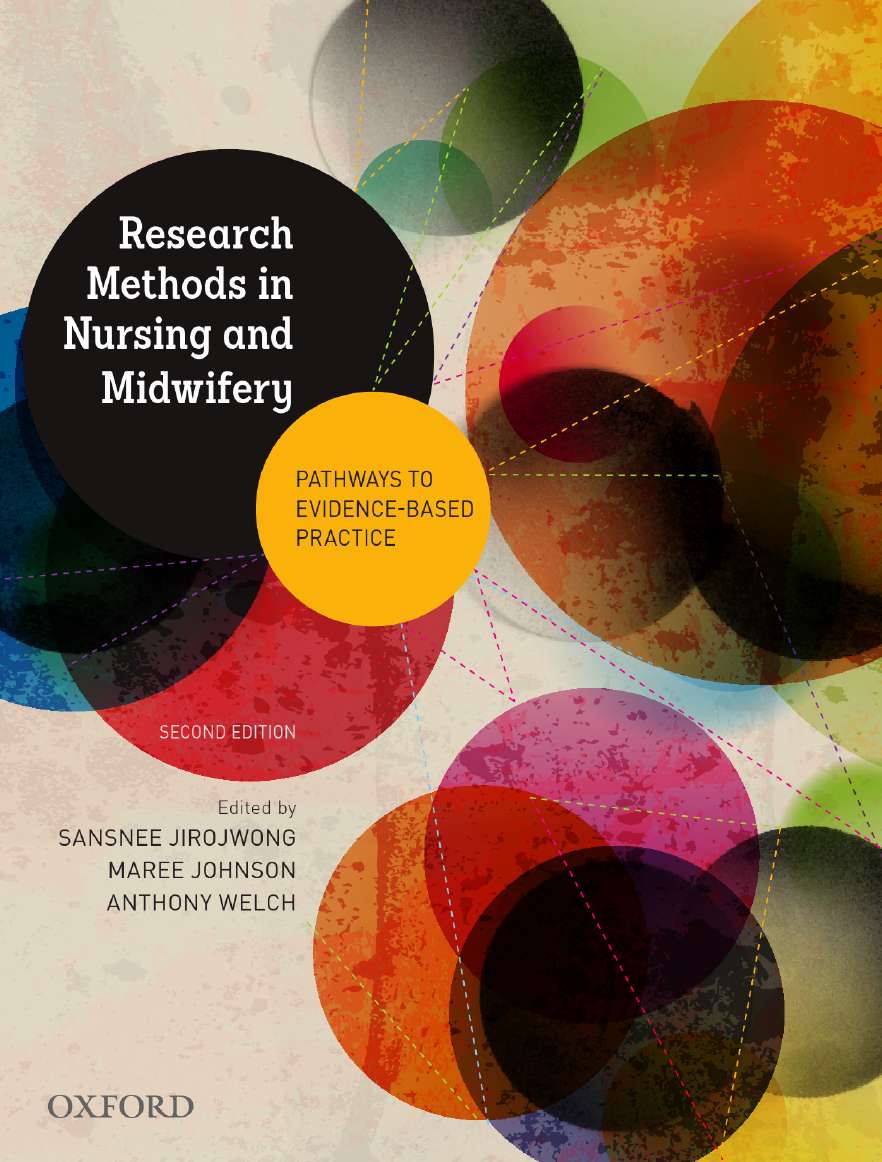Research Methods in Nursing and Midwifery eBook

Research Methods in Nursing and Midwifery eBook
|
ISBN: |
9780195597035 |
|
Binding: |
Ebook |
|
Published: |
10 Oct 2014 |
|
Availability: |
Available
|
|
Series: |
$92.95 AUD
$107.99 NZD
Add To Cart Add To CartOther options: Paperback $99.95 AUD $113.99 NZD
Request an inspection copyDescription
Research Methods in Nursing and Midwifery is a clear introduction to the principles used in research and systematic reviews for evidence-based practice. Beginning with the foundations of the research process, each chapter builds upon knowledge to cover specific research methods, population, sampling, data collection and analysis.
This user-friendly text is rich with learning support for nursing and midwifery students, including easy-to-read flowcharts, practical examples and tips, practice exercises and additional resources to expand their knowledge of the research process and methodology and their application to evidence-based practice. The second edition has been substantially restructured and refocused with new chapters and pedagogy to provide nursing and midwifery students with a clear and accessible guide to all aspects of the research process and the skills to confidently apply research to their professional practice.
NEW TO THIS EDITION
- New chapters:
- 2. Evidence-Based Practice for Nurses and Midwives
- 5. Sampling in Qualitative Research
- 9. Sampling in Quantitative Research
- Refocused chapters on Qualitative Research Design, Quantitative Research Design and Quantitative Data Analysis have been substantially rewritten to be more student-friendly
- Restructured table of contents for improved clarity and logical flow
Contents
Chapter 1. The Importance of Research in Nursing and Midwifery
Chapter 2. Evidence-based Practice for Nurses and Midwives
Chapter 3. Introducing the Research Process
Chapter 4. Ethical and Legal Considerations in Research
PART 2: QUALITATIVE RESEARCH METHODS
Chapter 6. Qualitative Research Design
Chapter 7. Data Collection: Qualitative Research
Chapter 8. Qualitative Data Analysis
PART 3: QUANTITATIVE AND MIXED METHODS RESEARCH
Chapter 10. Quantitative Research Design
Chapter 11. Data Collection: Quantitative Research
Chapter 12. Quantitative Data Analysis
Chapter 13. Mixed Methods Research
PART 4: PATHWAYS TO EVIDENCE-BASED PRACTICE
Chapter 15. Undertaking a Systematic Review
Chapter 16. Disseminating Research
Authors
Editors
Sansee Jirojwong - formerly of the School of Nursing and Midwifery, University of Western Sydney and is now based in her native Thailand
Maree Johnson - Associate Dean (Research), Faculty of Health Sciences, Australian Catholic Universityt
Anthony Welch - Associate Professor, School of Nursing and Midwifery, Central Queensland University
Contributors
Petra Gertraud Buettner
Monika Buhrer-Skinner
Sungwon Chang
Keri Chater
Ritin Fernandez
Rhonda Griffiths
Cecily Hengstberger-Sims
Jackie Lea
Janice Lewis
Phillip Maude
Reinhold Muller
Penny Paliadelis
Glenda Parmenter
Karen Pepper
Jamie Ranse
Jan Taylor
Jane Warland
Lisa Whitehead
Student Resources
The following resources are available for students using Research Methods in Nursing and Midwifery, Second Edition:
- Further reading suggestions:
Parts 1 & 2;
Parts 3 & 4 - Useful weblinks:
Part 1: Getting Started in Research
Part 2: Qualitative Research Methods
Part 3: Quantitative and Mixed Methods Research
Part 4: Pathways to Evidence-based Practice
Lecturer Resources
The following resources are available for lecturers who prescribe Research Methods in Nursing and Midwifery for their course:
- Instructor’s Resource Manual containing icebreakers, tutorial activities and sample essay topics
- Testbank of multiple-choice and short-answer questions for each chapter
For more information about the resources for Research Methods in Nursing and Midwifery, please contact your Oxford Territory Manager.